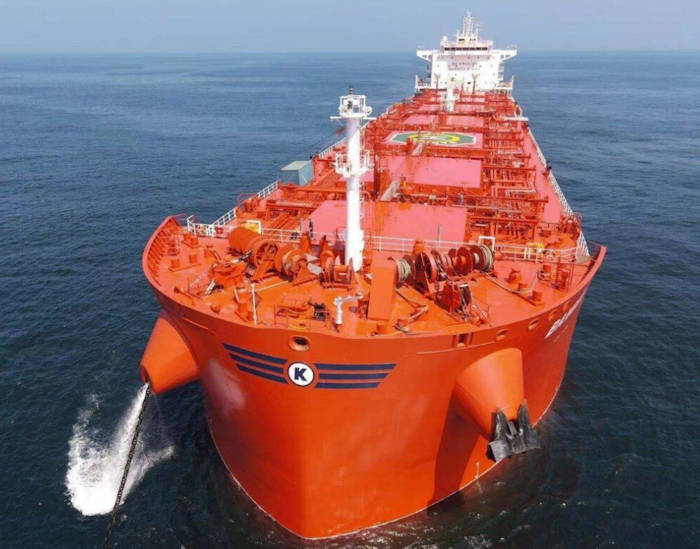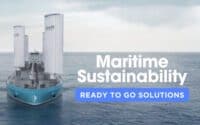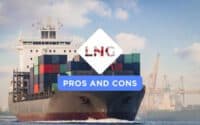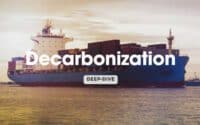Klaveness Combination Carriers: Navigating the Future of Sustainable Shipping

In the realm of global maritime commerce, few names resonate with the kind of forward-thinking innovation and environmental stewardship as Klaveness Combination Carriers (KCC). Rooted in the tradition of shipping but never constrained by it, KCC has pioneered an approach that revolutionizes the very fabric of maritime transport, breaking barriers, reducing inefficiencies, and setting benchmarks in sustainability.
* Please send feedback/suggestions to editor @ shipuniverse.com
Expansion into the Middle East: Strengthening the Global Reach
In a move reflective of its global ambitions and strategic foresight, KCC recently announced the establishment of its commercial presence in Dubai. This isn’t just an expansion; it’s a statement. Dubai, with its geographical advantage, acts as a bridge—both symbolic and logistical. It seamlessly connects the West with the East, making it an invaluable nexus for maritime trade.
For KCC, the decision to set foot in Dubai is more than just geographical; it’s strategic. Acting as a fulcrum between the company’s operations in Oslo and Singapore, the Dubai hub solidifies KCC’s reach, enabling it to tap into the pulsating markets of the Middle East, South Asia, and Africa. This move showcases not just KCC’s expanding horizons but also its commitment to bringing its unique shipping solutions closer to global clientele.
CEO Engebret Dahm, known for his astute business acumen, underscored the significance of this expansion. “Dubai has an advantageous location for serving our Middle Eastern and South Asian customers. We target that our commercial presence in Dubai will further strengthen our service offering in this important region,” Dahm remarked, highlighting the strategic vision behind the move.
But while visions are aplenty, actions speak louder. As testament to its commitment, the Dubai office of KCC commenced operations on August 1st, 2023. A new chapter in a long-standing legacy, this marks another milestone in KCC’s illustrious journey of bridging continents and reducing emissions.
Klaveness Combination Carriers: A Brief Overview
KCC’s impressive fleet is testament to its expertise and ambition. Currently, the company boasts ownership and operations of eight CABU and eight CLEANBU combination carriers. This fleet is slated for expansion with three state-of-the-art CABU vessels already under construction, poised for delivery in 2026. This is not just growth in numbers, but a testament to KCC’s commitment to sustainable shipping solutions for the future.
But what truly sets KCC apart is its unparalleled innovation in combining wet and dry bulk cargo transport. With the capability to switch between dry and wet cargo shipments, these vessels showcase minimal ballast between laden voyages. The upshot is not just operational efficiency but also profound environmental benefits. KCC’s combination carriers tout an impressive 30-40% reduced fuel consumption per ton-mile of transported cargo compared to standard vessels. This, in turn, translates to up to a 40% reduction in carbon emissions for every transported ton of cargo – a significant stride in the pursuit of a greener planet.
European Union Emissions Trading System (EU ETS) and Its Implications for Shipping
Introduced in 2005, the European Union Emissions Trading System (EU ETS) emerged as the EU’s premier tool for regulating greenhouse gas emissions. At its inception, the primary focus of EU ETS was to combat climate change by placing a definitive price on CO2 and creating a tangible incentive for energy-intensive industries to slash their emissions.
However, the tides are changing. Starting from 2024, the scope of the EU ETS is set to widen, enveloping emissions from the shipping sector. This move, while crucial for environmental stewardship, comes with its share of complexities and concerns.
With shipping now under the EU ETS umbrella, companies are poised to face a new set of challenges and responsibilities. Questions abound: How will emissions allowances work in practice? What are the anticipated costs, and how will these be allocated? How prepared is the industry for this new paradigm, and what ripple effects will it send across global shipping?
As the clock ticks towards 2024, the maritime industry, regulators, and environmentalists alike await answers. The overarching sentiment? A cautious optimism, tinged with the hope that this move will serve as a catalyst for positive change across the vast expanse of the world’s oceans.
KCC and the EU ETS
In the vast spectrum of discussions surrounding the EU ETS and its potential ramifications on the shipping industry, one conversation stands out – that between Jean Sissener and Ingrid Kylstad of ZeroLab. As two influential voices in the realm of maritime trade and decarbonization, their discourse offers invaluable insights into the approaching tides of change.
At the heart of their conversation lies the EU ETS itself: its intricate mechanics, the surrendering of emissions allowances, and its associated costs. But beyond the complexities and nuances of the system, the focus pivots to how the industry, particularly KCC, is bracing for its impact. How will customers, who often bear the brunt of additional operational costs, respond? How might they choose to navigate the newfound financial landscape?
Klaveness Combination Carriers is not one to be caught unawares. Their meticulous preparations for the EU ETS era reflect not just a compliance-driven approach, but also a proactive mindset. One notable step in their journey is the incorporation of a carbon shadow pricing mechanism. This self-regulating strategy factors in potential future carbon prices into today’s decision-making, ensuring KCC remains at the forefront of sustainable shipping.
But KCC’s innovations don’t stop there. They’ve also instituted the carbon adjusted freight (CAF) mechanism in collaboration with South32. This unique approach further entrenches their commitment to reducing carbon footprints, ensuring that their operational efficiencies also translate into tangible environmental benefits.
In Summary
Klaveness Combination Carriers has consistently showcased its resilience, innovation, and commitment to leading the charge in sustainable maritime operations. Whether it’s their pioneering combination carriers, their strategic global expansions, or their proactive measures in anticipating and responding to regulatory shifts, KCC stands as a beacon of what the future of shipping could and should look like.
As the world grapples with the urgencies of climate change and the imperative for greener industries, KCC’s vision is clear: to traverse the globe’s oceans not just efficiently, but responsibly. In the face of changing winds and tides, they navigate with a compass set firmly on sustainability and progress.

Do you have a Maritime Product or Service that may be of interest to Shipowners? Tell us about it here!
Do you have feedback or insights? Please reach out to editor @ shipuniverse.com



